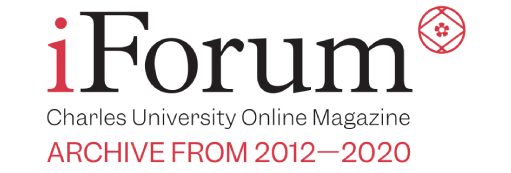Lucie Kettnerová • 6 January 2012
Když se zadlužit, tak bezpečně. Hlavně nedopadnout jako Uroboros
January 6, 2012; By: Lucie Kettnerová; Section: Interviews & Portraits
Surveying the Czech consumer loan market, assessing the quality of individual lenders and offering the public an instrument that will enable them to easily compare financial institutions. Those are the main goals of the Safe Loan Navigator project created by a team headed by Prof. Ing. Michal Mejstřík, CSc., from the Institute of Economic Studies of the Charles University Faculty of Social Sciences. i-Forum discussed the project with its manager PhDr. Petr Teplý, Ph.D.
When was the project carried out and how was it financed?
Our institute has been dealing with the subject of finances for a long time and therefore we decided that we should not only produce theoretical studies but also carry out applied research useful for individual consumers. We got down to work in the spring of last year and we presented the results in late November. Professor Michal Mejstřík had a Czech Science Foundation grant for his “Institutional Responses to Financial Market Failures” project and decided to give part of the money to this research. Other participants joined in afterwards.
Who exactly is behind the project?
Professor Michal Mejstřík is the supervisor of the project and I am its manager. Other participants include our postgraduate students Jana Chvalkovská and Petr Janský, both of whom had already worked on zIndex.cz on corruption, and a bachelor’s student Kryštof Krotil.
Has any similar research been carried out in the Czech Republic?
For most academics dealing with finance this topic is not worthy of a dissertation because for scientists it’s not “rocket science” and for practicing professionals it is too sophisticated. There is no similar ranking of companies offering consumer loans on the market yet. The People in Need organization started some activity in this field but their Ethical Loan Index compared only 8 companies while we are comparing 34.
That is not to say that no one is concerned with consumer loans. Our colleagues from the Czech National Bank, colleagues from The Center for Economic Research and Graduate Education of Charles University, as well as colleagues from our institute are dealing with them. However they are looking at them from a macro-perspective, that means they are mainly interested in how many loans do not get repaid or what their correlation with the economic cycle is. But people are more interested in the way consumer loans work, who provides them and what legislative rules apply to them. We felt this microeconomic perspective was missing on the market.
What was the intention behind the project?
The outcomes of the Safe Loan Navigator should primarily improve people’ orientation in the field of consumer loans and help them tell the safe providers from the unsafe (predator) lenders. Therefore the intention is based on long-term sustainability, that is regular updating and improvement of methodology, along with generating other credit-related topics. For example, the compulsory registration of all consumer credit providers with a financial arbiter by the end of 2011 will produce other valuable pieces into the jigsaw puzzle of consumer financing in the Czech Republic.
Who is the navigator intended for primarily?
There are three main target groups. Besides the clients of the credit companies it is our fellow scientists working on theoretical studies rather than applied research which would help to tackle real life issues. The third target group are journalists who can make use of 48 pages of more general information. For them the study might have an educative meaning.
What is safe debt?
The construction of the navigator corresponds to the definition of safe credit which we had consulted with many experts in the field of consumer credit. According to the Navigator, safe loan is such that fulfils the three following criteria from the applicant’s point of view: the applicant knows the terms of the loan, for example the annual percentage rate or the overall amount paid, they know the quality of the credit provider and finally they understand the consequences of repaying or not repaying the credit, i.e. how the loan will affect their household budget.
How was the Safe Loan Navigator constructed?
In all we examined 50 consumer loans from 34 providers, 13 of them banks and 6 non-bank companies, and 15 so-called predators. Each creditor had a chance to verify the partial results. Only a few predators did so but an overwhelming majority of the safe providers did. Let me also point out that the examined 15 predators are only a sample of the companies and individuals whom we identified on the internet or included them at the recommendation of consumer watchdogs. According to expert estimates there are thousands, maybe tens of thousands of them operating on the Czech market.
Based on the above mentioned safe loan parameters (with weights of 40%, 40% and 20%) we set 13 criteria whose weighted mean determined the final ranking in the Navigator. The financial institutions were assessed on the example of a 30,000-crown loan with a one year maturity and a 100,000-crown loan with a maturity of five years. If the institution received 5–10 points, it ranked among the safe ones; a result of 0–4.99 points meant it was ranked among the credit predators.
What did the results of the study reveal?
It is alarming that the results of the Navigator revealed a so-called grey zone, that is predator companies with a more lenient of practically no regulation – none of them received more than 3 points. Their risk rests mainly in their lack of transparency (providing of information or the lack thereof ahead of the signing of the credit agreement), in high prices, excessive penalties in case of default and other security mechanisms (signing of a blank bill, securing a low loan with an incomparably more valuable property etc.). It is true, though, that safe creditors will not lend money to certain clients because of their low creditworthiness and therefore predators remain their only option.
How do you see the future of household debt in the Czech Republic?
Irresponsible debt and excessive debt of households is a pressing problem in our country as proved by the growing number of personal bankruptcies and foreclosures. In this connection let me use an illustration. Egyptian mythology features the snake Ouroboros which devours its own tail. In the short term it will feed itself but over time this will lead to its death. Irresponsible debt is similar. In the short term, the irresponsible borrower will increase their current consumption thanks to the debt but over time the non-repayment of credit may result in their personal bankruptcy or their end and subsequently lead to a new, less cheerful period of their life. I sincerely hope that the number of such Ouroboroses will decrease in the Czech Republic and that our Safe Loan Navigator will contribute to that.
|
PhDr. Petr Teplý, Ph.D., is a graduate of the Institute of Economic Studies at the Charles University Faculty of Social Sciences. At present, he is a lecturer in finance and banking. He also studied in Austria, the USA and New Zealand. During his research he has co-authored more than 90 studies and 10 books. He regularly lectures at universities and conferences abroad. |

